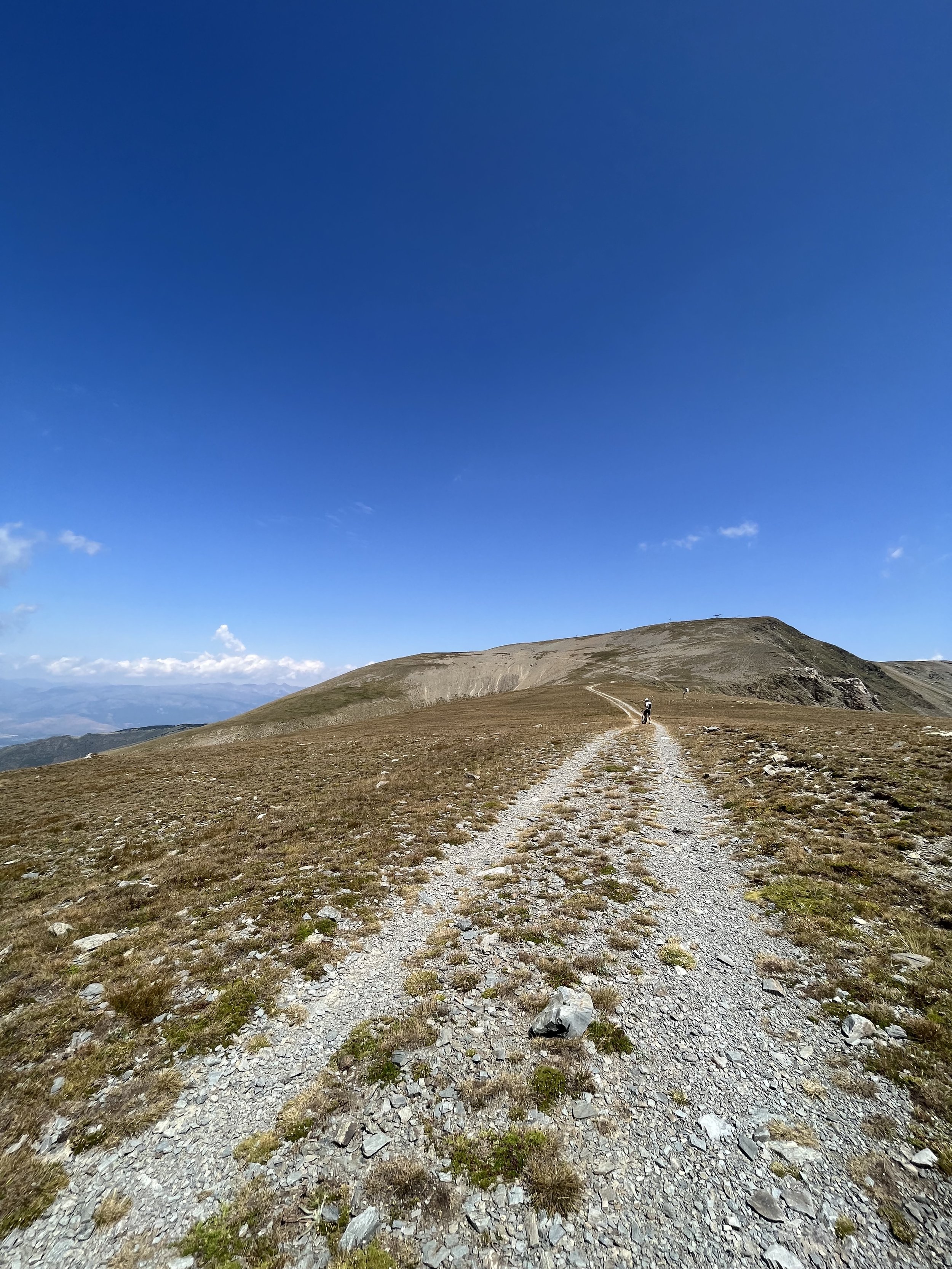Altitude Training- A Guide.
Altitude training has long fascinated endurance athletes, particularly cyclists, as they seek every advantage in the quest for performance gains.
The story of altitude training as we know it today began with the 1968 Mexico City Olympics, held at an altitude of 2,240 meters (7,350 feet). The games provided a dramatic backdrop for athletes, as many endurance events saw significantly slower times, while explosive events, like sprints and jumps, saw record-breaking performances. The reduced oxygen availability at high altitudes was clearly affecting athletic performance, but in unexpected ways. This sparked a keen interest in how altitude influences the human body, particularly in endurance sports.
Since then, altitude training has evolved significantly. It’s now a cornerstone in the training regimes of many elite cyclists, marathoners, and other endurance athletes. However, the practice is far from one-size-fits-all; altitude training is highly individual, and its effectiveness can vary widely from athlete to athlete. Moreover, despite decades of research, it remains an area of ongoing scientific inquiry, with new insights emerging regularly.
The EPO Era and Altitude Training
During the notorious EPO (Erythropoietin) era in cycling, the benefit of altitude training came under scrutiny. Professional cyclists, whose hematocrit levels (a measure of the proportion of red blood cells in the blood) were suspiciously high, often attributed this to altitude training. However, it was later revealed that many of these athletes were using synthetic EPO, a performance-enhancing drug that artificially boosts red blood cell production. This deception clouded the understanding in the benefits of natural altitude training which has taken a further decade to truly uncover.
Despite this, altitude training has persisted as a legitimate and effective method for improving endurance performance, particularly when done correctly. Let’s explore some of the scientifically-backed benefits of altitude training and how cyclists can maximise these gains.
The Benefits of Altitude Training
1. Increased Red Blood Cell Production (Erythropoiesis)
One of the primary benefits of altitude training is the stimulation of erythropoiesis, or red blood cell production. At higher altitudes, the partial pressure of oxygen is lower, which means that less oxygen is available for the body. In response, the kidneys release more erythropoietin (the naturally occurring hormone), which stimulates the bone marrow to produce more red blood cells. These additional red blood cells increase the oxygen-carrying capacity of the blood, which can enhance endurance performance when athletes return to sea level.
2. Increased Capillarisation
Another significant benefit of altitude training is increased capillarisation—the development of more blood vessels and a higher density of capillaries within the muscles. This physiological adaptation improves the diffusion of oxygen from the blood to the muscle cells, facilitating more efficient oxygen delivery during exercise. Enhanced capillarisation means that your muscles can receive more oxygen and nutrients, which supports sustained aerobic performance and quicker recovery.
3. Increased Myoglobin Production
Altitude training also stimulates the production of myoglobin, a protein found in muscle tissue that binds to oxygen and transports it to the mitochondria, where it is used to produce energy. With higher myoglobin levels, muscles can store more oxygen and improve their ability to function under conditions where oxygen availability is limited, such as during intense exercise or at high altitudes.
Maximising Your Altitude Training
To fully harness the benefits of altitude training, it’s essential to approach it with a well-rounded strategy. Here are some guidelines to optimise your time spent at elevation:
1. Monitor and Assess Key Metrics
Regularly monitoring key physiological metrics is crucial to ensuring that your altitude training is effective and that you’re adapting appropriately. Keep a close eye on:
- Oxygen Saturation (SpO2): Track your blood oxygen levels to ensure they are within a safe range and to gauge how well your body is acclimating.
- Heart Rate (HR): Both resting and exercising heart rates can provide insights into your adaptation and readiness for training.
- Power Output: Measure your power on the bike to understand how altitude is affecting your performance. Consider lowering FTP to offset the effects of altitude.
- Resting Heart Rate (RHR): An elevated RHR can indicate that your body is under stress, either from altitude or training load.
2. Prioritise Sleep and Recovery
Sleep is when your body does most of its adaptation to altitude, so ensuring quality sleep is paramount. Altitude can disrupt sleep patterns initially, so creating a conducive environment for rest is essential. Recovery, including passive recovery days and active recovery sessions, should also be emphasised to allow your body to adapt without overtraining.
3. Adjust Your Nutrition
Altitude training increases your body’s nutritional demands. Hydration is particularly important, as the air at altitude is often drier, leading to increased fluid loss through respiration. Iron supplementation may be necessary to support increased erythropoiesis, but this should be done under the guidance of a sports nutritionist. Additionally, you might need to adjust your carbohydrate intake to meet the increased energy demands, as well as ensure high-quality protein consumption to support muscle repair and adaptation.
4. Modify Training Intensity and Volume
Training at altitude requires careful balancing of intensity and volume. While it’s important to continue stressing the body to stimulate adaptation, you may need to reduce the intensity or volume of training to avoid overtraining and excessive fatigue. Monitoring your body’s response and adjusting your training plan accordingly is crucial. For most athletes, staying at altitude for a minimum of 2-3 weeks is recommended to experience meaningful benefits.
Altitude training, when done correctly, can provide significant benefits for cyclists looking to enhance their endurance and overall performance. However, it’s not a magic bullet and requires careful planning, monitoring, and adjustment to be effective.
As science continues to evolve, so too will our understanding of altitude training, making it an exciting area for continued exploration in the world of cycling.



